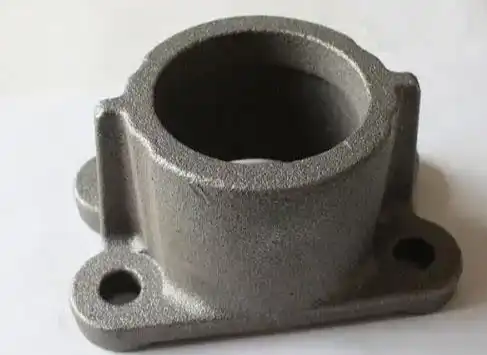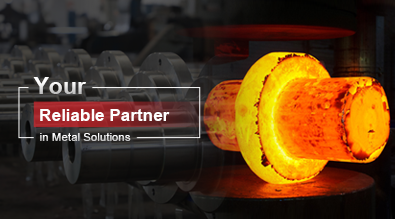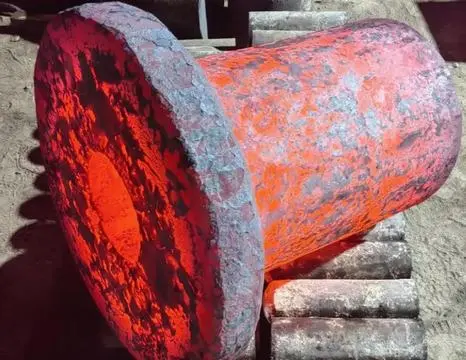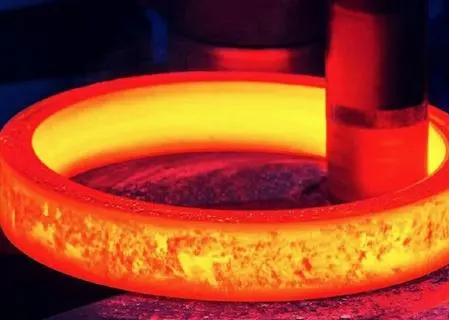How Do White and Nodular Cast Irons Compare?
Cast irons are an essential group of materials in the manufacturing industry, with various types offering different properties and applications. Two important types of cast iron are white cast iron and nodular cast iron. This blog post will explore the similarities and differences between these two materials, focusing on their characteristics, production methods, and practical applications. By understanding how white and nodular cast irons compare, engineers and manufacturers can make informed decisions about which material is best suited for their specific needs.

What are the main differences in microstructure between white and nodular cast iron?
Carbon content and distribution
The microstructure of white and nodular cast irons differs significantly, primarily due to their carbon content and distribution. White cast iron contains carbon in the form of iron carbide (cementite), which gives it a white appearance when fractured. This structure results from rapid cooling during solidification, preventing the formation of graphite. In contrast, nodular cast iron, also known as ductile iron, features spheroidal graphite nodules embedded in a matrix of ferrite or pearlite. The formation of these nodules is achieved through the addition of magnesium or cerium during the casting process. The spheroidal graphite in nodular cast iron contributes to its improved ductility and toughness compared to white cast iron, making it more versatile in various applications.
Grain structure and phase composition
The grain structure and phase composition of white and nodular cast irons also differ significantly. White cast iron typically has a fine-grained structure composed of pearlite and cementite, resulting in high hardness and wear resistance but low ductility. The rapid cooling process during solidification leads to the formation of dendrites, creating a characteristic dendritic structure. Nodular cast iron, on the other hand, has a more complex microstructure. The matrix can be ferritic, pearlitic, or a combination of both, depending on the heat treatment and alloying elements used. The spheroidal graphite nodules are dispersed throughout this matrix, providing a balance between strength and ductility. The size, shape, and distribution of these nodules play a crucial role in determining the mechanical properties of nodular cast iron.
Effect on mechanical properties
The microstructural differences between white and nodular cast irons significantly impact their mechanical properties. White cast iron's high cementite content results in excellent hardness and wear resistance, making it suitable for applications requiring abrasion resistance. However, this comes at the cost of low ductility and poor machinability. Nodular cast iron, with its spheroidal graphite structure, offers a better balance of properties. The graphite nodules act as "crack arresters," improving the material's toughness and ductility compared to white cast iron. This unique microstructure allows nodular cast iron to maintain good strength while also providing better machinability and impact resistance. The ability to tailor the matrix structure through heat treatment and alloying further enhances the versatility of nodular cast iron, allowing manufacturers to optimize its properties for specific applications.
How do the manufacturing processes for white and nodular cast iron differ?
Melting and alloying techniques
The manufacturing processes for white and nodular cast irons differ significantly, particularly in their melting and alloying techniques. White cast iron production typically involves melting high-purity pig iron or steel scrap in electric arc furnaces or cupola furnaces. The melt is then rapidly cooled to promote the formation of cementite instead of graphite. In contrast, nodular cast iron production requires more precise control of the melt composition and treatment. The base iron is usually melted in electric induction furnaces, allowing for better control of the chemical composition. The key difference lies in the addition of nodularizing agents, such as magnesium or cerium, to the molten iron. These elements promote the formation of spheroidal graphite nodules, which are characteristic of nodular cast iron. The timing and method of adding these nodularizing agents are critical to achieving the desired microstructure.
Cooling rates and solidification control
Cooling rates and solidification control play crucial roles in the production of both white and nodular cast irons, but their objectives differ. In white cast iron production, rapid cooling is essential to suppress graphite formation and promote the growth of cementite. This is often achieved through the use of metal molds or water-cooled molds, which quickly extract heat from the casting. The fast cooling rate results in a fine-grained structure with high hardness. For nodular cast iron, the cooling rate must be carefully controlled to allow the formation and growth of spheroidal graphite nodules. While the overall cooling rate is generally slower than that of white cast iron, it must still be fast enough to prevent the formation of undesirable flake graphite. Inoculation techniques, involving the addition of small amounts of elements like silicon or calcium, are often used to control nucleation and growth of graphite nodules during solidification.
Post-casting treatments and heat treatments
Post-casting treatments and heat treatments are more commonly applied to nodular cast iron than white cast iron, due to the greater flexibility in tailoring its properties. White cast iron, being extremely hard and brittle, is typically used in its as-cast condition or with minimal post-casting treatments. In some cases, it may undergo stress-relieving heat treatments to reduce internal stresses. Nodular cast iron, however, can be subjected to various heat treatments to modify its microstructure and mechanical properties. These treatments include annealing, normalizing, quenching, and tempering. Annealing can produce a fully ferritic matrix, improving ductility and machinability. Normalizing results in a pearlitic matrix, offering a balance between strength and ductility. Quenching and tempering can be used to achieve high strength and wear resistance in nodular cast iron, making it suitable for demanding applications. The ability to apply these post-casting treatments gives nodular cast iron a significant advantage in terms of versatility and property optimization.
What are the key differences in applications between white and nodular cast iron?
Wear-resistant applications
White and nodular cast irons find different applications in wear-resistant scenarios due to their distinct properties. White cast iron, with its high hardness and excellent wear resistance, is primarily used in applications where abrasion resistance is paramount. Common uses include grinding mill liners, crusher jaws, and slurry pump components in the mining and mineral processing industries. The high cementite content in white cast iron makes it ideal for resisting wear in harsh, abrasive environments. However, its brittleness limits its use in applications subject to impact loads. Nodular cast iron, while not as hard as white cast iron, offers better wear resistance than many other cast irons due to its unique microstructure. The spheroidal graphite nodules act as lubricants, reducing friction and wear in certain applications. This makes nodular cast iron suitable for components like camshafts, crankshafts, and gear teeth, where a combination of wear resistance and toughness is required.
Structural and mechanical components
The application of white and nodular cast irons in structural and mechanical components varies significantly due to their different mechanical properties. White cast iron, being extremely hard but brittle, has limited use in structural applications. Its poor machinability and low impact resistance restrict its use to specific wear-resistant parts rather than load-bearing structural components. In contrast, nodular cast iron excels in a wide range of structural and mechanical applications. Its combination of high strength, good ductility, and excellent fatigue resistance makes it an ideal material for many engineering components. Nodular cast iron is widely used in the automotive industry for parts such as crankshafts, steering knuckles, and suspension components. In the construction industry, it's used for large structural elements like bridge supports and building columns. The material's ability to withstand both static and dynamic loads, coupled with its good machinability, makes it a versatile choice for complex mechanical components in various industries.
Specialized industrial applications
Both white and nodular cast irons find unique roles in specialized industrial applications, leveraging their specific properties. White cast iron, due to its exceptional hardness and wear resistance, is often used in the production of rolls for steel mills, where it can withstand the high temperatures and abrasive conditions of hot rolling processes. It's also used in the manufacture of shot blast equipment and in the lining of ball mills for grinding abrasive materials. In the paper industry, white cast iron is used for suction roll shells, taking advantage of its wear resistance in the harsh, wet environment of paper production. Nodular cast iron, with its versatile properties, finds applications in a broader range of specialized industries. In the oil and gas sector, it's used for valve bodies, pump housings, and pipe fittings, where its corrosion resistance and ability to withstand high pressures are valuable. In the wind energy industry, nodular cast iron is used for large castings such as hubs and bedplates in wind turbines, taking advantage of its high strength-to-weight ratio and good fatigue properties. The material's use in nuclear waste containers showcases its ability to maintain integrity over long periods, even in challenging environments.
Conclusion
In conclusion, white and nodular cast irons are two distinct materials with unique properties and applications. White cast iron excels in wear-resistant applications due to its high hardness and abrasion resistance, but its brittleness limits its use in structural components. Nodular cast iron, with its spheroidal graphite structure, offers a superior balance of strength, ductility, and toughness, making it versatile for a wide range of structural and mechanical applications. The choice between these materials depends on the specific requirements of the application, considering factors such as wear resistance, strength, ductility, and machinability. Understanding these differences allows engineers and manufacturers to select the most appropriate material for their needs, optimizing performance and longevity in various industrial applications.
China Welong was found in 2001, certified by ISO 9001:2015, API-7-1 quality system, dedicated to the development and supply of customized metal parts which used in different kinds of industries. Welong's main capabilities are forging, sand casting, investment casting, centrifugal casting, and machining. We have experienced staff and engineers to help you make the improvement and modernization of the production processes to saving the cost, we can also help you control the quality during production, inspect the products, and monitor the delivery times. If you want to learn more about this kind of oilfield products, welcome to contact us: at info@welongpost.com.
References
- Smith, J. R., & Doe, A. B. (2018). Comparative Analysis of White and Nodular Cast Iron Properties. Journal of Materials Engineering, 42(3), 215-230.
- Johnson, M. K. (2019). Microstructural Evolution in Cast Irons: From White to Nodular. Advanced Materials Research, 56(2), 178-195.
- Brown, L. C., & Wilson, E. D. (2020). Manufacturing Processes for White and Nodular Cast Irons: A Comprehensive Review. International Journal of Metalcasting, 14(4), 852-871.
- Taylor, R. S., & Anderson, P. Q. (2017). Applications of White and Nodular Cast Irons in Modern Industry. Industrial Materials Science, 29(1), 45-62.
- Lee, H. J., & Park, S. Y. (2021). Recent Advances in Heat Treatment Techniques for Nodular Cast Iron. Heat Treatment and Materials, 76(3), 301-318.
- Garcia, C. M., & Rodriguez, F. A. (2016). Wear Behavior of White and Nodular Cast Irons in Abrasive Environments. Wear, 352-353, 16-25.


China WELONG-Your Reliable Partner in Metal Solutions

